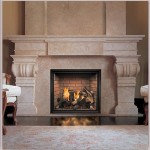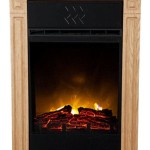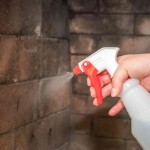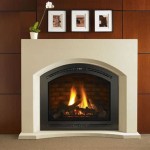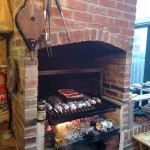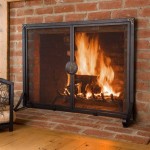Double-Sided Corner Fireplaces: A Comprehensive Overview
Double-sided corner fireplaces present a unique and aesthetically pleasing heating solution for interior spaces. Unlike traditional fireplaces that are designed to face a single room, these units are constructed with two open sides positioned at a corner, allowing for a viewing and heating experience from two distinct areas of the home. This design not only maximizes the visual impact of the fire but also offers a functional way to distribute heat more evenly across adjacent rooms.
The increasing popularity of double-sided corner fireplaces stems from their ability to serve as a focal point in open-concept living spaces. By strategically placing the fireplace at a corner, homeowners can create a natural division between areas such as the living room and dining room while maintaining a sense of connectivity and flow. This architectural feature can significantly enhance the ambiance and value of a property.
This article will delve into the various aspects of double-sided corner fireplaces, exploring their design considerations, installation requirements, fuel options, safety measures, and maintenance procedures. Understanding these factors is crucial for homeowners considering incorporating this type of fireplace into their homes.
Design Considerations for Double-Sided Corner Fireplaces
The integration of a double-sided corner fireplace requires careful consideration of several design elements. The overall aesthetic appeal of the fireplace should complement the existing architectural style of the home. This includes selecting appropriate materials, finishes, and dimensions that align with the room's decor and color palette. Common materials used in the construction of these fireplaces include brick, stone, concrete, and metal.
The dimensions of the fireplace are also an important factor to consider. The height, width, and depth of the unit should be proportionate to the size of the rooms it will be serving. A fireplace that is too large can overwhelm the space, while one that is too small may not provide adequate heating or visual impact. Careful measurements and planning are essential to ensure a balanced and harmonious design.
Another design consideration is the style of the fireplace. Double-sided corner fireplaces can range from traditional to contemporary, with various design features such as arched openings, exposed brickwork, or sleek, minimalist lines. The choice of style should reflect the homeowner's personal preferences and the overall design aesthetic of the home. Consultation with an interior designer or architect can be beneficial in selecting the most appropriate design for the space.
Furthermore, the surrounding area around the fireplace should be carefully planned. This includes the placement of furniture, artwork, and accessories. The fireplace should be positioned in a way that allows for comfortable viewing from both rooms, and furniture should be arranged to encourage social interaction and relaxation. Adequate clearance around the fireplace is also necessary to ensure safety and prevent the risk of fire hazards.
Installation Requirements for Double-Sided Corner Fireplaces
The installation of a double-sided corner fireplace is a complex process that requires professional expertise. It is crucial to hire qualified and experienced technicians who are familiar with local building codes and safety regulations. Proper installation is essential to ensure the safe and efficient operation of the fireplace.
One of the primary installation requirements is the construction of a suitable chimney or venting system. The chimney must be properly sized and constructed to effectively remove smoke and combustion gases from the fireplace. The venting system should also be designed to prevent backdrafting, which can cause dangerous gases to enter the home. The type of venting system required will depend on the fuel type used by the fireplace, such as wood, gas, or electric.
Structural considerations are also important. The weight of the fireplace must be supported by a strong and stable foundation. Reinforcement may be necessary to ensure that the floor can handle the additional load. In some cases, it may be necessary to consult with a structural engineer to assess the structural integrity of the building and determine the appropriate support measures.
Electrical wiring and gas lines (if applicable) must be installed by licensed professionals. All wiring and plumbing must comply with local building codes and safety standards. Proper grounding and insulation are essential to prevent electrical hazards and gas leaks. Regular inspections and maintenance are also necessary to ensure the continued safety and reliability of these systems.
Clearance requirements are another crucial aspect of the installation process. The fireplace must be installed with adequate clearance from combustible materials such as wood framing, drywall, and furniture. This clearance is necessary to prevent the risk of fire hazards. The specific clearance requirements will vary depending on the type of fireplace and the materials used in its construction.
Fuel Options, Safety Measures, and Maintenance
Double-sided corner fireplaces offer a variety of fuel options, each with its own advantages and disadvantages. Wood-burning fireplaces provide a traditional and aesthetically pleasing experience, but they require regular maintenance and can produce significant amounts of smoke and ash. Gas fireplaces offer convenience and efficiency, but they may not provide the same level of ambiance as wood-burning models. Electric fireplaces are the easiest to install and maintain, but they may not provide the same level of heat output as other options.
Safety is paramount when operating a double-sided corner fireplace. Smoke detectors and carbon monoxide detectors should be installed in the vicinity of the fireplace to provide early warning of any potential hazards. The fireplace should be regularly inspected for any signs of damage or malfunction. Flues and chimneys should be cleaned annually to remove creosote buildup, which can pose a fire risk. A fire extinguisher should be readily accessible in case of emergency.
Maintenance is essential to ensure the longevity and efficiency of a double-sided corner fireplace. Wood-burning fireplaces require regular cleaning to remove ash and soot. Gas fireplaces should be inspected annually by a qualified technician to ensure that all components are functioning properly. Electric fireplaces require minimal maintenance, but the heating elements and wiring should be checked periodically for any signs of wear or damage.
Proper ventilation is also crucial for safety and air quality. The fireplace should be equipped with a properly functioning damper or flue to ensure that smoke and combustion gases are effectively vented outside the home. The damper should be opened before starting a fire and closed when the fire is completely extinguished. Regular cleaning of the air vents and filters can help to improve air quality and prevent the buildup of dust and allergens.
Operating a double-sided corner fireplace responsibly involves adhering to safety guidelines and best practices. Never leave a fire unattended, and always use a fire screen or glass door to prevent sparks and embers from escaping. Store firewood safely away from the fireplace, and never use flammable liquids to start a fire. By following these guidelines, homeowners can enjoy the warmth and ambiance of a double-sided corner fireplace while minimizing the risk of accidents and hazards.
In addition to general safety, fuel-specific considerations are important. For wood-burning fireplaces, using seasoned, dry wood is essential for efficient burning and reduced smoke production. Wet or green wood can produce excessive smoke and creosote, increasing the risk of chimney fires. For gas fireplaces, it's important to ensure proper gas line connections and regular inspections for gas leaks. For electric fireplaces, it's crucial to avoid overloading electrical circuits and to use surge protectors to protect the unit from power surges.
The choice of accessories can also impact safety and aesthetics. Fireplace screens or glass doors are essential safety features that prevent sparks and embers from escaping the firebox. Tool sets, including pokers, shovels, and tongs, allow for safe and efficient tending of the fire. Decorative elements, such as mantels, surrounds, and hearths, can enhance the visual appeal of the fireplace and complement the overall design of the room.
Regular professional inspections are highly recommended for all types of double-sided corner fireplaces. A qualified technician can identify potential problems before they become serious hazards and can perform necessary maintenance to ensure the fireplace operates safely and efficiently. These inspections should include checks of the chimney, venting system, gas lines, electrical wiring, and all other critical components of the fireplace.
Corner Two Sided Gas Fireplace Heat Glo

Chicago Corner 40re Designer Gas Fireplace Regency

Lennox Elite Edvcrcl Gas Fireplace Toronto

Result For Two Sided Corner Fireplace With Built In Wood Home Burning

Lx2 3 Sided Corner Gas Fireplace Natural The Center

D1000vad Fireplace Corner Double Sided Wood

European Home Evonicfires Tyrell 32 Inch Halo Built In 3 Sided Electric Fireplace Firebox Ev Fp Fireplaces Depot

Corner Two Sided Gas Fireplace Capo Fireside

Galaxy See Through Gas Fireplace Stellar Hearth 818 881 4684

Corner Fireplace Insert Visio 2 L Attika Feuer Ag Wood Burning Steel Contemporary

